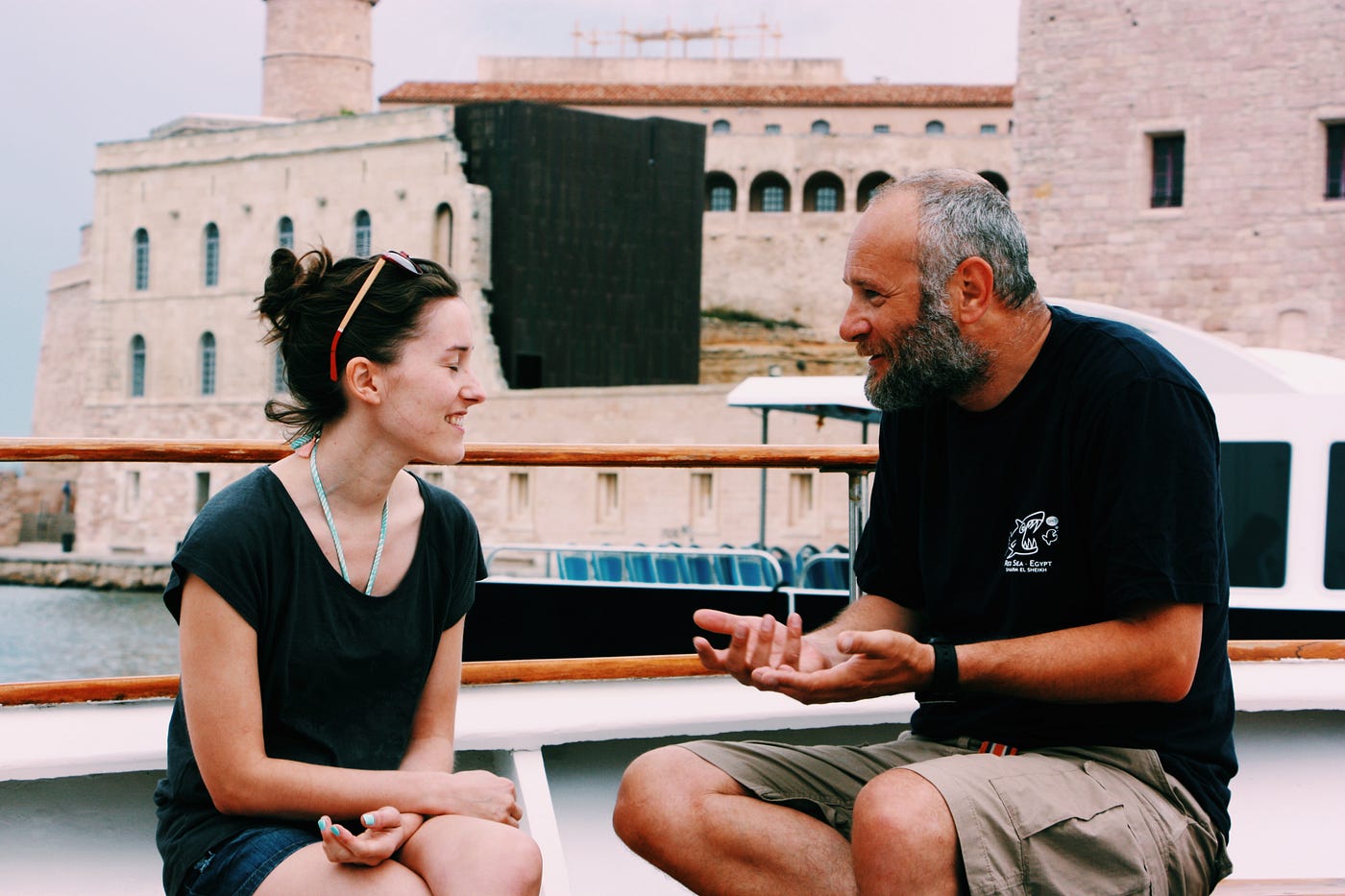
User research through play
An alternative to traditional user research methods
Children are by far more creative than most adults I’ve met. They have not yet adapted the limiting beliefs and cognitive biases most adults view the world with and that inhibit our creative thoughts.
With mere imagination a child can transform a boring rock or pebble into a magical treasure. They can turn a toy into a living, breathing entity with personality, feelings and desires. They transition from normal boy or girl into a superhero merely by thought.
Imagination comes naturally to a child. They are effortlessly able to ignore the reality right in front of them and create magical worlds and experiences with the power of their minds.
So why do adults struggle so much with innovation? And what can we learn from children and play to be more creative in our innovation process?
Imagination is more important than knowledge. — Albert Einstein
The problem with cognitive bias
Empathy is often a biased perspective based on the user experience designer’s previous experiences and beliefs as I discovered at a recent service design jam.
The one thing that struck me while we were out doing user interviews as part of our research was that the insights the team came up with validated their previous assumptions even though it was not true. Cognitive bias was blocking real insights to surface in the user experience journey design.

Prior to the interviews, while we were compiling the questions, one of the designers said “I bet the staff doesn’t even think about accessibility issues”.
During the user interview to try and pinpoint a user problem we want to solve, I observed how this bias impeded the objective gathering of information by the designer. When interviewing a lady at an information desk at one of the most disabled friendly venues I’ve seen to date, the designer kept seeing issues that did in fact not really exist (in my opinion, who saw the alternative right next to the option, just like a user have a choice of fresh or long-life milk in a supermarket).
The friendly assistant intently listened and carefully answered each question posed to her. All of her answers satisfied that accessibility has been, and continues to be catered for as much as humanly possible at this venue. They really seem to have thought of everything and has a truly inclusive user experience.
Yet, as we shared our insights back at the office, the designer surprised me with her confidence in proving her bias and that accessibility is really an issue at this venue. She firmly believed getting around in a wheelchair or with a guide dog was a problem, regardless of the reality right in front of her. She chose to miss the ramp right in front of the venue and focused only on the slight step in front of an alternative entrance, which to her proved that someone in a wheelchair is not able to easily get into the venue, for example.
It struck me how this cognitive bias limited an innovative design and I started looking for alternatives to limit the impact of cognitive biases and beliefs during the user research process. Here is what I found.
The evolution of empathy in user research
Brainstorming — Imagining possible users
Brainstorming is one of the most-used and oldest techniques for coming up with new ideas. It is also one of the most limiting tools to empathize.
Brainstorming relies mostly on cognition. It links existing thoughts to each other, but rarely can identify something really innovative as it is limited to what the users already know and relies on what the user imagine possible users might want.
The level of empathy is dependent on the designers as passive observers to a possible problem. There is no interaction with the user and validation for the hypothesis, which often proves to be incorrect, is a separate exercise that may distract or slow down the creative process.
User interviews — Interacting with potential users
A better form of empathizing is conducting actual user interviews. It produces more insights as an objective perspective is given with a more realistic view of a possible solution.
It is an improvement on brainstorming alone as it involves someone objective. As a designer, it is often hard to switch between the creator and the user and having a third party perspective’s input into the creative process provides valuable insights and much more empathy not possible through brainstorming alone.
The problem with user interviews, however, is that the quality of the answers depend on the quality of the questions. Because there is limited time and context available, users tend to give specific answers to specific questions which might miss obvious but overlooked assumptions.
Users are chosen randomly with little control over the demographic details of the user. Finding the ‘right’ user that is willing to be interviewed is not guaranteed and the interviewer is very limited in the questions they can ask the person. It is thus also a limiting way to gather insights and empathy.
The biggest limitation, however, with interviewing users as tool for doing user research is that users often don’t know what they want until they are presented with it. The average user is able to criticize something that exists quite easily, but unable to envisioning a future product or service that does not yet exist.
Bodystorming — Becoming potential users
Another popular method for user research that limits the reliance on cognitive abilities alone is bodystorming. This technique is an improvement to the previous two techniques as it separates the mind from the body and does not rely wholly on cognition for gaining insights.
Possible user scenarios are acted out in a fishbowl environment after observing the target users in their natural environment. These sessions can be done without actual users, or with target users and results in a much more pragmatic way to gain insights than what brainstorming by thinking it out alone can.
The acting out of possible scenarios allows more practical and even obvious problems to surface that is often overlooked by thinking about a solution alone. What might logically make sense when thinking about it might not be such a good idea when actually using it. With using role-play, the designers are put into the shoes of actual users, which drastically improves the ability to design a good user experience.
Combining this with an empathy map exercise as described in a previous post, by dividing the group between more active players and more passive observers increase insights even more.
This technique ads a dimension of empathy that does not exist in either traditional brainstorming or user interviews by becoming the user rather than interacting with the user.
Which brings me to the grand finale…
Place Storming — Being an actual user
Place Storming is a context-driven and play-based approach to user research designed by Jane McGonigal, an influential alternate reality game designer.
Additional to normal bodystorming, Place Storming adds context by allowing users to act out user scenarios in real life settings, combining the benefits of all the previous methods into a much more powerful tool to gain insights.
However, the secret ingredient of this technique is not only the context, but the use of random “tools” — a common technique employed in game design- which are used as props to inspire innovative solutions as the research is being done.
In Place Storming a set of ordinary, every day articles are used as props to aid the creative process. Each player is asked to submit a random word prior to the game being played. For example, each person must submit the 7th word on the 7th page of a random book the pick up. This word is then added to one of the everyday articles gathered to create a unique improv “tool” that is used by the players throughout the process of research.
While the players are out in the real world acting out possible scenario’s, they use these tools in any way they choose to create a more play-like and imaginative world. They are free to decide how they choose to interpret the tool, as long as they are able to make a connection between the tool and the user scenario.
The science behind randomness
The play-mechanic of adding a random input that adds an element of fun as well as spark more creative insight during the research phase is not accidental at all.
Edward de Bono, the father of creative thinking and author of many books on how the mind works and specifically how to think more creatively, uses random inputs as tool to bypass our habitual thinking as a way to increase our usual level of creativity.
According to de Bono, the mind is a train of thoughts, each linked to another thought. Each experience we have makes a specific thought stronger, much like an object becomes smoother or more indented with use. Our previous experiences thus shapes our thinking.
For example, when I smell coffee, I immediately think of coffee shops, which in turn leads me to think of books, which then might lead me to think of a specific book, which reminds me of a movie which leads me to an idea.
Without us realizing, our thought patterns become so ingrained that it is not possible to change them in order to think fresh or innovatively without an external prompt. By introducing a random input, we allow our habitual thought patterns to be broken, which leads to new thoughts being possible.
No longer are we stuck in our original thought pattern with coffee leading to an idea based on the chain of thoughts. Now, the random input interrupts this train and we are forced to make a new association between the smell of coffee and this random “tool”.
This forced analogy between two seemingly unrelated items is what leads to a new thought pattern that is much more innovative and unique than what is possible with user interviews or brainstorming and even bodystorming.
Play more to think better
Next time you feel stuck and unable to think fresh during the design phase, consider adding play-mechanics to your process.
After all, children are the master innovators and they spend the majority of their time playing. Why can’t we?
Originally Published in UX Collective: https://uxdesign.cc/user-research-through-play-2286e69b30d7
